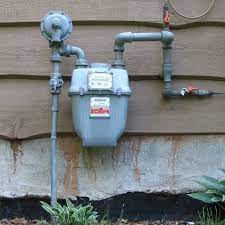The Evolution of Natural Gas Meters: Efficiency
Natural gas meters play a crucial role in the energy landscape, serving as the vital link between suppliers and consumers. These devices have undergone significant evolution over the years, driven by technological advancements, regulatory changes, and a growing emphasis on efficiency and sustainability. In this article, we will explore the journey of natural gas meters, from their humble beginnings to the sophisticated and innovative devices that shape the energy industry today.
- Historical Perspective:
The history of natural gas meters dates back to the 19th century when the utilization of gas for lighting and heating became widespread. Early gas meters were simple and mechanical, often relying on diaphragms or rotary mechanisms to measure gas flow. These rudimentary devices lacked precision and were prone to inaccuracies, posing challenges for both consumers and suppliers.
- Technological Advancements:
The 20th century witnessed significant advancements in natural gas meter technology. Mechanical meters evolved into more accurate and reliable designs, incorporating features such as rotary displacement and orifice plates. However, the real revolution came with the advent of electronic components and microprocessors.
Electronic natural gas meters, introduced in the latter half of the 20th century, marked a paradigm shift. These meters offered improved accuracy, data logging capabilities, and the potential for remote monitoring. The integration of smart technologies allowed for better management of gas distribution networks and enhanced customer service.
- The Rise of Smart Meters:
In recent years, smart natural gas meters have become a focal point in the industry’s quest for efficiency and sustainability. These devices leverage advanced sensors, communication technologies, and data analytics to provide real-time insights into gas consumption patterns. Smart meters enable automatic meter reading, eliminating the need for manual readings and reducing operational costs.
One of the key advantages of smart meters is their ability to facilitate demand response programs. By providing consumers with detailed information about their gas usage, these meters empower individuals and businesses to make informed decisions about energy consumption, contributing to overall energy efficiency.
- Remote Monitoring and Control:
Smart natural gas meters enable remote monitoring and control, allowing utility companies to detect leaks or irregularities promptly. This capability not only enhances safety but also helps prevent wastage of natural gas, reducing environmental impact. Automated shut-off features can be triggered in case of emergencies, preventing potential hazards and ensuring the well-being of consumers.
- Integration with the Internet of Things (IoT):
The Internet of Things (IoT) has further propelled the evolution of natural gas meters. By connecting meters to a broader network, IoT technologies enable seamless communication between devices, utilities, and consumers. This interconnected ecosystem facilitates predictive maintenance, real-time analytics, and improved overall system reliability.
- Sustainability and Environmental Considerations:
The push towards sustainability has prompted innovations in natural gas meter design to align with environmental goals. Efforts are underway to develop meters with reduced environmental footprints, employing materials that are more environmentally friendly. Additionally, the integration of renewable energy sources into gas distribution networks is a growing trend, further emphasizing the need for meters that can adapt to changing energy landscapes.
- Challenges and Future Trends:
Despite the progress made in natural gas meter technology, challenges persist. Cybersecurity concerns, interoperability issues, and the need for standardized communication protocols are areas that demand attention. As the industry looks to the future, trends such as the incorporation of artificial intelligence (AI) for predictive analytics, blockchain for secure transactions, and advanced sensor technologies are likely to shape the next generation of natural gas meters.
- Regulatory Landscape:
The evolution of natural gas meters is closely tied to the regulatory landscape governing the energy sector. Governments and regulatory bodies play a pivotal role in shaping the standards and requirements for gas metering devices. Stricter regulations often drive innovation by mandating higher accuracy, safety features, and environmental considerations in meter designs. Compliance with these standards ensures the reliability and uniformity of gas metering across different regions, fostering a more consistent and efficient energy market.
- Global Trends and Varied Applications:
Natural gas meters are utilized across a spectrum of applications, from residential households to industrial complexes. Global trends in energy consumption, population growth, and urbanization impact the demand for gas meters. In some regions, the focus may be on deploying smart meters to enhance residential energy efficiency, while in others, large-scale industrial applications may drive the need for specialized and high-capacity meters.
- The Transition to Renewable Gas:
The global shift towards renewable energy sources has implications for natural gas meters. As renewable gases, such as biomethane and hydrogen, gain prominence in the energy mix, meters must adapt to measure and monitor these alternative fuels accurately. The integration of smart technologies becomes even more critical in managing the complexities associated with a diverse and evolving energy portfolio.
- Energy Management and Consumer Empowerment:
Smart meters empower consumers to take an active role in managing their energy consumption. Real-time data and analytics provided by these meters enable consumers to make informed decisions about their usage patterns. This not only contributes to cost savings but also aligns with broader initiatives promoting energy conservation and sustainability.
- Technological Convergence:
The convergence of various technologies, including artificial intelligence (AI), cloud computing, and edge computing, is influencing the design and functionality of natural gas meters. AI algorithms can analyze vast amounts of data to predict consumption patterns, detect anomalies, and optimize distribution networks. Cloud computing facilitates the storage and processing of metering data, while edge computing allows for real-time analytics at the meter level.
Conclusion:
Natural gas meters have come a long way since their inception, evolving from basic mechanical devices to sophisticated, smart meters that contribute to a more sustainable and efficient energy landscape. As technology continues to advance, the integration of smart technologies, IoT, and a focus on sustainability will drive further innovation in natural gas meter design. The ongoing commitment to enhancing accuracy, safety, and environmental responsibility positions these devices as crucial components in the evolving energy infrastructure.

